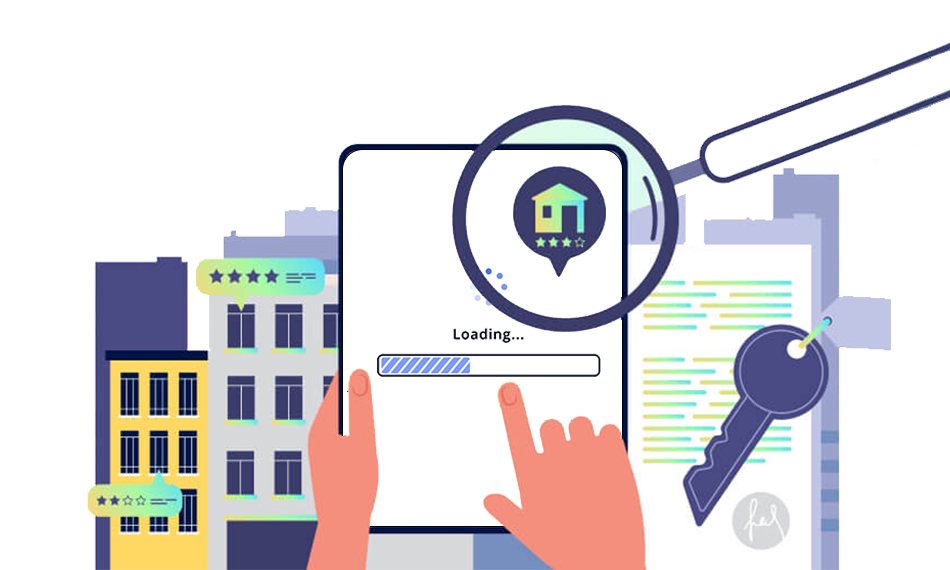TL;DR: A slow real estate website speed hurts visibility, user experience, and lead generation. Optimize images, mobile performance, and server speed to attract more clients and get better ROI from your marketing. Learn the importance of speed for real estate websites and optimize them for driving more leads.
If your real estate website loads slowly, every second costs you attention and likely leads. Buyers and sellers begin their searches on phones and expect instant response and access to listings, photos, and property details. A single delay can frustrate them enough to click away to a faster competitor, leaving your hard-earned listings unseen.
As the real estate industry continues to evolve rapidly, a sluggish site increases bounce rates, hurts search rankings, and reduces the number of property inquiries you receive. In short, real estate website speed is an essential business metric to thrive in the competition and ensure your listings reach the audience at the right time.
Why Speed is Important for Real Estate Websites

Website speed directly affects rankings, user experience, and conversions. Here are the reasons why real estate website speed is important:
1. Users Abandon Slow Pages Quickly
The probability of a bounce rises sharply as load time increases. According to Hostinger, moving from 1 second to 3 seconds raises bounce rates by roughly 32%. That means fewer people see your listings or contact forms.
2. Mobile Matters More than Ever
2025 NAR data shows that more than 60% of buyers used a mobile or tablet device during their property search. Thus, mobile performance directly affects how many potential leads actually view listings.
3. Speed Affects Search Visibility
Google’s Page Experience and Core Web Vitals (LCP, INP, and CLS) are part of how Google analyzes pages. Sites that deliver better real-world performance are more likely to be favored when results are otherwise comparable. That can mean more organic traffic to your property pages.
4. Conversions and Lead Volume Move with Speed
Multiple industry reports and experiments show that even small delays reduce conversion rates. Slow-loading pages produce lower form completions and fewer phone clicks, directly affecting lead generation (conversions).
Factors Affecting the Speed of Real Estate Websites

Real estate sites have attributes that make performance challenging, such as large hero images, property image galleries, embedded map widgets, listing search tools, IDX feeds, and mortgage calculators. Typical real estate website speed affecting factors include:
Large, Unoptimized Real Estate Images and Galleries
The hero image or gallery often becomes the Largest Contentful Paint (LCP) that determines perceived load time. Optimizing these images and LCP is critical for smooth loading and improved Core Web Vitals.
Heavy JavaScript and third-party Widgets
Map embeds, analytics, chat widgets, and property search scripts can block rendering or add long tasks that delay interactivity.
Slow Server Response
If your origin server is far from users or has a slow load, the initial response time will suffer. A Content Delivery Network (CDN) reduces latency by caching assets closer to users.
Poor Mobile Optimization
Without responsive images, proper viewport setup, or mobile-first design, pages load more slowly on phones, and that matters because most property searches happen on mobile.
Render-blocking CSS/JS and Uncompressed Assets
Unoptimized files, uncompressed assets, and render-blocking resources push back CWV and interactivity.
How to Improve Real Estate Website Speed and Performance

Below are actionable fixes tailored to property sites that can generate leads:
1. Identify the Real Problems First (Measure, Don’t Guess)
Run field and lab audits with Google PageSpeed Insights (lab + CrUX field data), Lighthouse, and your Search Console Core Web Vitals report shows real user performance. Start by identifying the LCP element (often the hero image or main gallery) and the biggest JavaScript tasks.
2. Optimize Above-the-Fold Images and Hero Content
Serve appropriately sized images (don’t send full-res photos for small viewports). Use modern formats (WebP/AVIF when supported). And, preload the hero image or critical resources so the browser prioritizes them. These steps directly improve the LCP score.
3. Use a Fast CDN and Caching
Edge caching reduces geographic latency and offloads origin servers. Many real estate sites see large load reductions by enabling a CDN. Also, cache static assets (images, CSS, JS) use sensible cache headers for listings that don’t change frequently.
4. Reduce and Defer JavaScript
Remove unused third-party scripts (old widgets or plugins), defer or async non-essential scripts, and split heavy bundles. Move inline critical CSS and defer heavy styles that aren’t needed for initial paint. These reduce blocking time, improve interactivity, and enhance the real estate website.
5. Make your Property Search and IDX Feeds Lean
If your listing search pulls a lot of data client-side, consider server-side rendering or paginating results to avoid sending huge payloads to the browser. Cache API responses at the edge when possible. This reduces both payload size and time-to-interaction.
6. Prioritize Mobile Experience
Because more than 60% of real estate searches happen on mobile/tablet devices. Design for small screens first, responsive images, simplified hero sections for mobile, large tappable CTAs, and minimized content above the fold. Real estate mobile optimization often yields the biggest gains in leads.
7. Lazy-Load Galleries and Below-the-Fold Media
Defer image and video loading outside the viewport so the initial page can render quickly. This helps LCP and perceived performance while still letting visitors browse full galleries on demand.
8. Test the Business Outcomes (Measure Leads Before/After)
Track lead form submissions, phone clicks, MLS contact clicks, and organic traffic of your real estate website. A/B test performance changes, as many sites see measurable uplift in form completions and phone inquiries after speed fixes. Use analytics to tie engineering work back to business KPIs.
Conclusion
For real estate websites, speed is not just a technical KPI, but it directly affects discovery, user experience, and the volume of leads that come through your forms and phone calls. With most buyers using mobile devices and Google increasingly factoring real-world performance into ranking, optimizing real estate website speed should be treated as a regular marketing channel investment.
Start with a measurement audit, fix your LCP (usually images/galleries), use a CDN, and keep testing. This way, you’ll likely see more visitors convert into genuine leads.















































